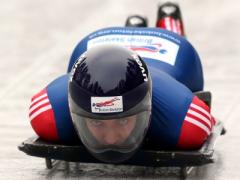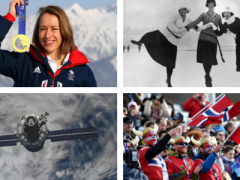Skeleton is held on one of the artificially refrigerated ice tracks around the world which vary in length from around 1200 to 1500m and have a vertical drop between 110m and 130m.
Skeleton is made up of 2 phases:
1. The Start – where athletes aim to push the sled as quickly as possible using explosive power for 20-30m before jumping onto the sled.
2. Driving the Sled – after pushing athletes leap onto the sled into the most aerodynamic position with their head centimeters from the ice. They aim to drive the sled into and out of the corners of the track keeping the perfect line. Athletes steer with combination of shifting their body weight, head position, knees, shoulders and feet
Athletes compete on four circuits the World Cup, Intercontinental Cup, European Cup and North American Cup. The World Cup is the highest level and the one all athletes strive towards. Of course the Olympics is the athletes’ ultimate goal every four years and the World Championships takes place in every year when it is not the Olympic Winter Games.
Skeleton competitions consist of 2 runs in one day, apart from at the World Championships and the Olympics where skeleton is a 4 run event over 2 days, with the gold medal going to the competitor with the best aggregate time.
Runs are timed electronically to the nearest hundredth of a second.
Athletes can reach over 140Km/h and the maximum g-force is 5g which can only last for 2 seconds, 4g can last for 3 seconds.
Only the prone position is allowed, although competitors who come off the sled temporarily, are not disqualified if they cross the finish line back on the sled.
There is a limit of 30 athletes in the men's event and 25 in the women's.
In the second run, only the top 20 from the first run can start. They start in reverse order of finishing time in the first run.
















